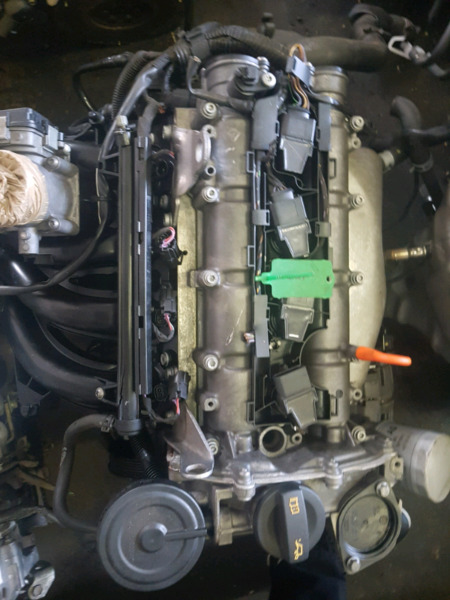Choose a cutting-edge clp engine for superior results.
Choose a cutting-edge clp engine for superior results.
Blog Article
Exactly How a Clp Engine Can Boost Effectiveness in Numerous Industries
The advent of CLP engines notes a significant change in functional efficiency throughout various fields, driven by their ability to maximize fuel consumption and minimize downtime. Industries such as production and logistics stand to gain substantially from their robust style and regular power outcome, which assure to streamline procedures and enhance efficiency. As companies increasingly focus on sustainability alongside effectiveness, the duty of CLP engines becomes a lot more important. What remains to be seen is exactly how these advancements will certainly form the future landscape of industrial procedures and their effect on wider economic patterns (clp engine).
Introduction of CLP Engines
CLP engines, or Continuous Liquid Propellant engines, represent a significant development in propulsion innovation, especially for area applications. These engines make use of a continual feed system that permits for the continual expulsion of propellant, causing improved performance and efficiency contrasted to typical strong or hybrid propulsion systems. By keeping a continuous flow of fluid propellant, CLP engines can accomplish more precise drive control, which is critical for maneuvering spacecraft in different mission scenarios.
The design of CLP engines integrates advanced products and ingenious fuel management systems. clp engine. This causes lowered weight and boosted dependability, important factors for long-duration room missions. In addition, the continual operation decreases the danger of combustion instability, an usual challenge in traditional rocket engines.

Advantages in Production
The production of Continual Fluid Propellant (CLP) engines offers numerous remarkable benefits that boost both performance and cost-effectiveness. Among the main benefits is the structured production process, which reduces the intricacy related to standard propulsion systems. By using liquid propellant, producers can accomplish greater precision in engine efficiency, bring about enhanced energy result and lowered waste.
Furthermore, CLP engines help with a greater level of modularity, enabling for easier assimilation into various production lines. This versatility can substantially lower preparations and improve overall functional versatility. Using CLP modern technology likewise tends to lessen the requirement for extensive upkeep due to less moving components, which equates into minimized downtime and functional prices.

Applications in Logistics
Leveraging Continuous Liquid Propellant (CLP) engines in logistics offers significant advantages in operational efficiency and reliability. These engines offer a robust service for different transportation requirements, allowing the seamless motion of products throughout huge ranges. The integral layout of CLP engines permits Get More Info regular power output, which translates into smoother and more foreseeable transport timetables.
Among the vital applications of CLP engines in logistics is in sturdy freight transportation, where they can drive both ground and airborne automobiles. Their capability to preserve high efficiency under differing tons problems guarantees that distribution timelines are met, consequently enhancing consumer satisfaction. In addition, CLP engines can be incorporated into automated logistics systems, helping with real-time monitoring and enhancing course preparation.
Moreover, the longevity of CLP engines reduces maintenance downtime, permitting logistics firms to optimize their functional capacities. This is specifically useful in warehousing operations, where performance in dealing with and transporting items is vital. As logistics continues to progress, the integration of CLP engines stands for a forward-thinking method that not just enhances efficiency but additionally supports the industry's expanding needs for dependability and rate.
Effect On Power Efficiency
Exactly How do Continual Liquid Propellant (CLP) engines improve power efficiency in transport? CLP engines make use of a constant circulation of fluid fuel, enhancing burning processes and preserving a secure thrust outcome. This layout reduces power losses related to conventional burning engines, where gas delivery can vary and bring about ineffectiveness.
The continual operation of CLP engines permits a more effective thermal cycle, causing higher certain impulse compared to traditional engines. clp engine. This converts to decreased gas intake for the exact same amount of work done, dramatically lowering operational expenses across different transport sectors, consisting of aeronautics and maritime markets
Furthermore, the capability of CLP engines to maintain ideal efficiency under varying lots conditions reduces the demand for constant acceleration and deceleration, even more improving gas performance. Improved energy effectiveness not just adds to cost savings however additionally leads to decrease greenhouse gas emissions, lining up with worldwide sustainability objectives.
Future Trends and Innovations
Arising advancements in Continuous Liquid Propellant (CLP) engine modern technology promise to transform the landscape of transport performance and sustainability. As sectors pivot towards greener choices, CLP engines stand at the center, incorporating cutting-edge products and style methodologies that boost efficiency while minimizing environmental impact.
Among one of the most encouraging trends is the adoption of crossbreed systems that incorporate CLP engines look here with sustainable energy resources. This harmony can optimize gas usage and decrease emissions, straightening with international sustainability objectives. Advancements in computational fluid dynamics (CFD) are helping with the layout of more aerodynamically reliable engines, leading to minimized drag and improved fuel effectiveness.
In addition, the development of wise surveillance systems is readied to improve functional efficiencies. These systems utilize data analytics and click to read IoT modern technology to optimize engine efficiency in real-time, ensuring that the engines operate within their most effective criteria.
As research remains to explore alternate propellant solutions-- such as biofuels and synthetic gas-- the future of CLP engines looks encouraging. By utilizing these innovations, markets can not just improve their effectiveness but likewise add considerably to a cleaner, extra sustainable future in transportation.
Final Thought
Finally, CLP engines stand for a significant improvement in performance throughout multiple industries. Their capability to enhance gas intake and reduce operational costs, integrated with a constant feed system, boosts power result and functional reliability. The integration of sophisticated materials and fewer moving components lessens upkeep demands, while placement with sustainability objectives placements CLP engines as a crucial technology for the future. Continued innovation in this field promises further improvements in efficiency and environmental performance.
Report this page